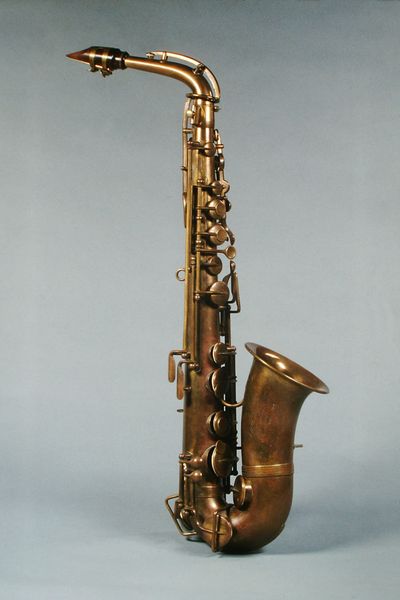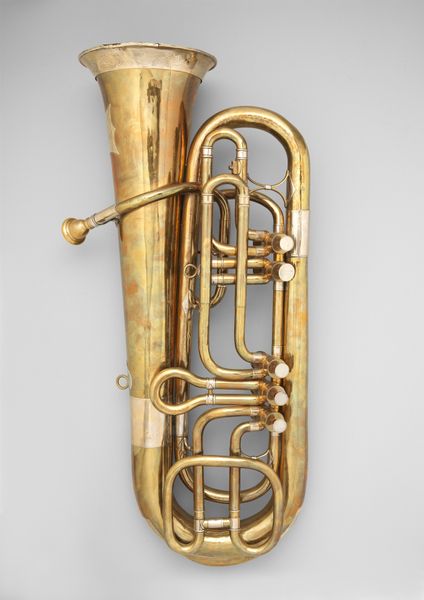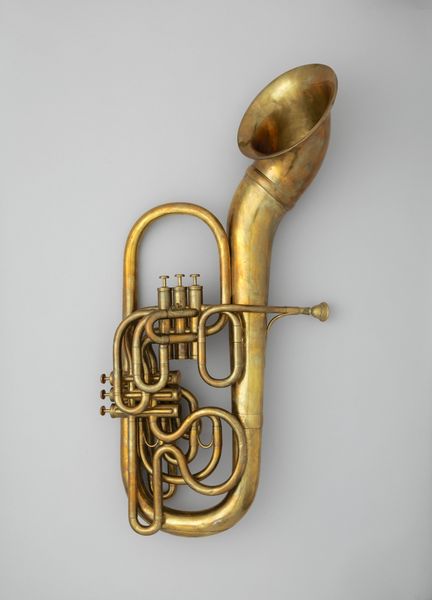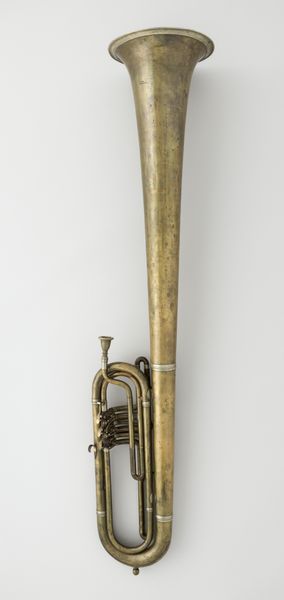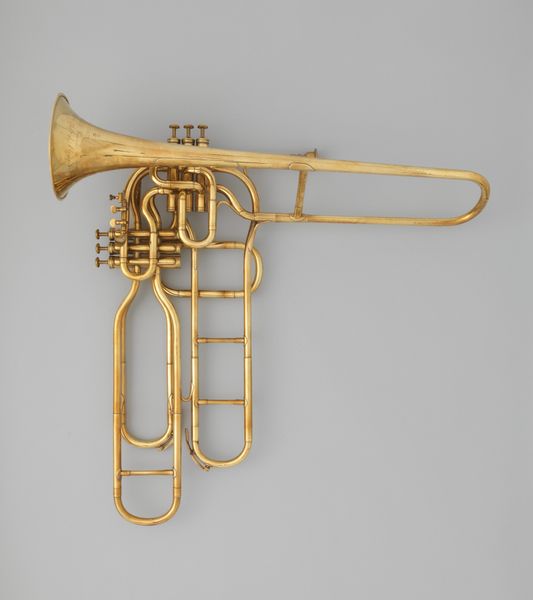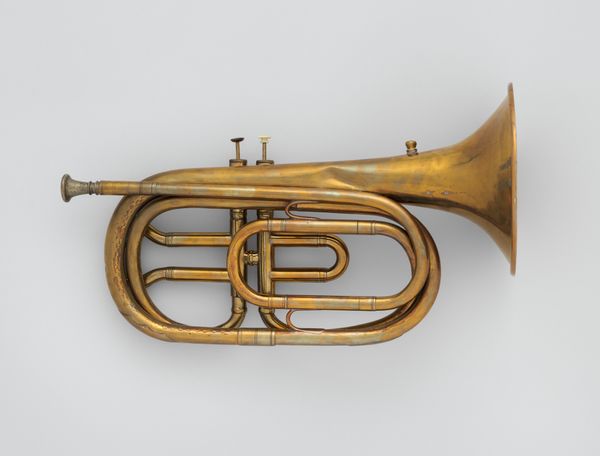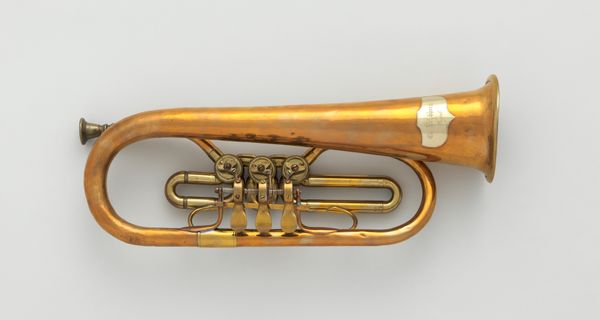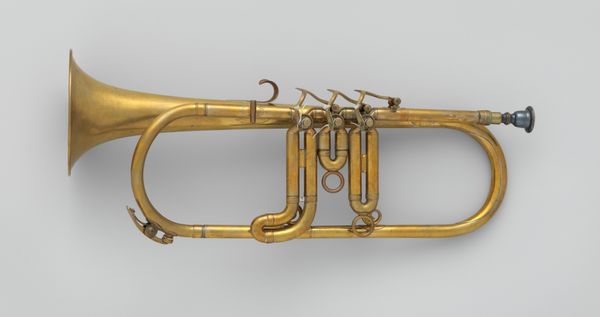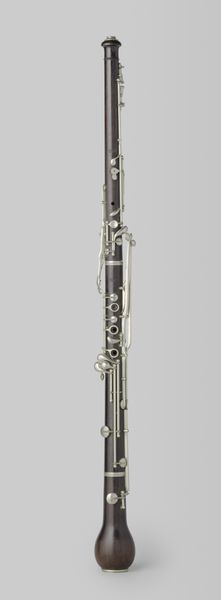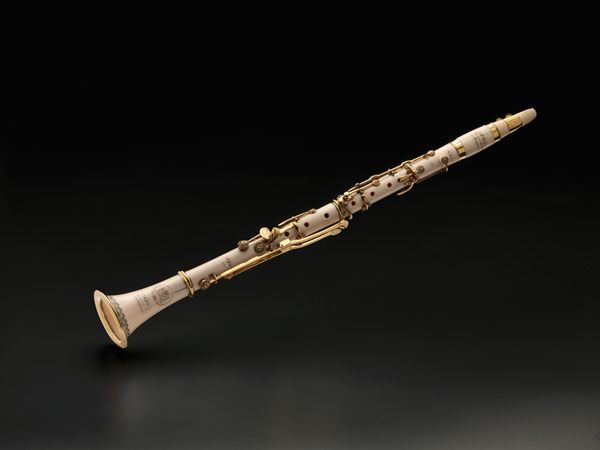
brass, metal
#
brass
#
metal
#
sculpture
#
musical-instrument
Dimensions: 23 1/2 × 5 1/2 × 14 in. (59.7 × 14 × 35.6 cm)
Copyright: Public Domain
Curator: At first glance, I'm immediately struck by the aged patina of the brass – it speaks to its history. Editor: Indeed! We are looking at an Alto Saxophone in E-flat crafted sometime between 1845 and 1865. The saxophone’s very existence embodies an intriguing intersection of industrial innovation and musical expression during the mid-19th century. It currently resides at the Metropolitan Museum of Art. Curator: I’m interested in how the materials here reflect something deeper. Brass has alchemical associations—transforming base metals into gold. Is there an ambition reflected here that music can elevate our base selves? Or could music itself evolve the brass in time? Editor: That’s a very compelling point! The instrument was invented by Adolphe Sax, in Belgium. He sought to create a single-reed instrument with the projection of a brass instrument, blending qualities, in his pursuit for progress and innovation. Considering it’s a hybrid in its conception, it carries so many layers of industrial ambition within the politics of music. Curator: Absolutely, the idea of crossing sonic boundaries is profound. You feel that visually, too, as the instrument is both gleaming but also feels weathered through time, reflecting those efforts that lead to its current place within cultural imagination. Each valve is a symbol, really, holding years of jazz history in potentia. Editor: Its position in shaping jazz is certainly key. The rise of jazz, with its strong links to the African American experience, placed the saxophone center stage. Curator: Yes, and in some ways it gave an enduring, very vocal tone for the struggle against disenfranchisement. It’s the physical manifestation of emotion. Editor: So it's cultural value comes from the empowerment it has represented. Very good points! Curator: For me, understanding the history and social forces that have molded it allows for better interpretation of the artifact's influence. Editor: Precisely, and unpacking it as a visual symbol lets us see how culture reshapes that physical object. Thanks for this revealing interpretation!
Comments
No comments
Be the first to comment and join the conversation on the ultimate creative platform.
